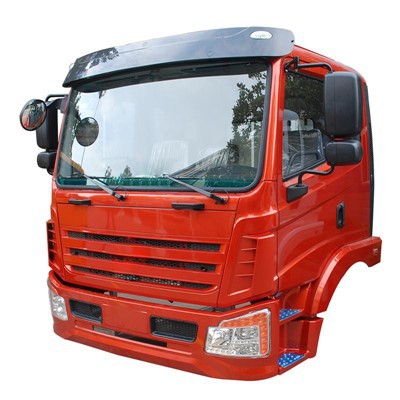Understanding VIN Manufacturer Codes: A Comprehensive Guide

Vehicle Identification Numbers (VINs) are critical components in the automotive industry. Among the many aspects of VINs, manufacturer codes play a significant role in identifying vehicle manufacturers and specific details about the vehicle. This article aims to provide a thorough understanding of VIN manufacturer codes, their significance, and how to decode them effectively.
What is a VIN?
A Vehicle Identification Number (VIN) is a unique seventeen-character string that serves as a vehicle’s fingerprint. Each VIN offers essential information about the vehicle, including its make, model, year of manufacture, and place of assembly. The VIN has become a standard in the automotive industry, allowing for easy tracking and identification of vehicles.
The Structure of a VIN
A VIN is composed of different sections, each serving a specific purpose. Understanding these sections is crucial for decoding VIN manufacturer codes.
1.1 The Three Sections of a VIN
- WMI (World Manufacturer Identifier): The first three characters represent the manufacturer and the country of origin.
- VDS (Vehicle Descriptor Section): Characters four through nine describe the vehicle’s features, including body style, engine type, and model.
- VIS (Vehicle Identifier Section): The last eight characters provide unique information about the vehicle, such as the production year, assembly plant, and unique serial number.
Understanding VIN Manufacturer Codes
VIN manufacturer codes are primarily found in the WMI section of a VIN. They indicate which manufacturer produced the vehicle and often include geographical information as well.
2.1 Importance of Manufacturer Codes
Manufacturer codes serve various purposes:
- Identifying the manufacturer of a vehicle.
- Facilitating recalls and safety notices.
- Supporting accurate insurance assessments.
- Helping buyers verify vehicle authenticity and history.
2.2 How to Identify Manufacturer Codes

Manufacturer codes typically include letters and numbers, and each combination corresponds to a specific manufacturer or region. For example, the WMI ‘1HG’ indicates a Honda manufactured in the United States.
Decoding VIN Manufacturer Codes
Decoding VIN manufacturer codes can appear complicated, but several resources allow you to effectively interpret this information.
3.1 Using Online VIN Decoders
Many websites offer free VIN decoding services that allow you to input a VIN and retrieve detailed information about the vehicle, including the manufacturer code. Some popular options include:
- VINChecker
- Carfax
- NHTSA VIN Decoder
3.2 Manual Decoding

If you prefer to decode manually, you can consult the National Highway Traffic Safety Administration (NHTSA) guide, which provides an extensive list of manufacturer codes.
Table 1: Sample Manufacturer Codes
| WMI | Manufacturer | Country |
|---|---|---|
| 1F | Ford | United States |
| 2G | General Motors | Canada |
| JHM | Honda | Japan |
| WVW | Volkswagen | Germany |
| KND | Kia | South Korea |
Practical Tips for Using VIN Manufacturer Codes
4.1 Checking Vehicle History
Understanding the manufacturer code can help you check the history of a vehicle, including accidents, title issues, and recall information via services like Carfax or AutoCheck.
4.2 Verifying Authenticity
Buyers can use manufacturer codes to verify whether a vehicle has been altered or if its parts were legitimately sourced from the original manufacturer.
4.3 Insurance Assessments
Insurance companies often request VIN manufacturer codes to calculate premiums accurately. Make sure to confirm the manufacturer details before finalizing your insurance policy.
4.4 In the Case of Recalls
Whether you’re considering purchasing a used vehicle or currently own one, knowing the VIN manufacturer code is crucial for checking if the vehicle has been subjected to recalls.
Common Misconceptions About VIN Manufacturer Codes
5.1 All Codes are Standardized
One common misconception is that all VIN codes follow the same standards worldwide. While there are standardized formats, individual manufacturers may have unique ways of encoding information.
5.2 Only New Cars Have VINs
Some believe VINs are exclusive to new vehicles. In reality, all vehicles, regardless of age, have VINs assigned to them, though the structure may vary for vintage vehicles.
Examples of VIN Manufacturer Codes
6.1 Real-World Examples
Here are some specific real-world examples of VIN manufacturer codes:
- 4T1: Toyota manufactured in the USA.
- 1G1: Chevrolet manufactured in the USA.
- 5YJ: Tesla manufactured in the USA.
- WDB: Mercedes-Benz manufactured in Germany.
Where to Find the VIN
The VIN can be located in various parts of a vehicle, such as:
- On the dashboard near the windshield.
- On the driver’s side door jamb.
- On the engine block.
- In the vehicle’s registration documents.
Frequently Asked Questions (FAQ)
7.1 What is the difference between WMI and VIN?
The WMI is the first three characters of a VIN that indicate the manufacturer, while a VIN is the full 17-character string that uniquely identifies a vehicle.
7.2 Can I decode a VIN by myself?
Yes, you can decode a VIN by consulting online databases or manuals that feature manufacturer codes and their meanings.
7.3 How can I find out if my vehicle has any recalls?

You can check for recalls using your VIN on the NHTSA website or by contacting the vehicle manufacturer directly.
7.4 Are VIN manufacturer codes the same worldwide?
While the structure of VINs is largely standardized, manufacturers from different regions might have varying ways of coding, leading to regional differences.
7.5 What should I do if my VIN is illegible?
If your VIN is illegible, check other locations on the vehicle where the VIN may be displayed, such as on the registration paperwork or consult a professional for assistance.
7.6 How often are VIN manufacturers codes updated?
Manufacturer codes can change over the years as companies evolve and new manufacturers emerge, so it’s essential to stay updated with current resources.
Resources for Further Exploration
To delve deeper into VIN manufacturer codes and their interpretations, consider exploring the following resources:
Understanding VIN manufacturer codes is not just for automotive enthusiasts; it’s a vital part of ensuring safety and informed purchasing. Knowing how to interpret a VIN effectively can save you time, effort, and potential headaches in the long run.
